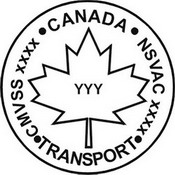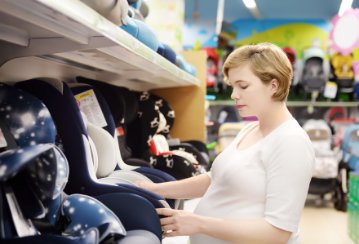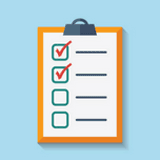News and Updates
What to look for when buying a car seat
Keeping your child safe while driving is extremely important. A car seat or booster seat is a crucial piece of safety equipment that, when used correctly, greatly reduces the risk of injury or death in the event of a collision.
Read on for frequently asked questions about purchasing a car seat to learn what to look for to best protect your child while in the car.
How do I know what kind of car seat my child needs?
Every province and territory in Canada has its own unique regulations on car seat safety. Consult your province or territory’s website for information on age, height and weight restrictions. In Ontario, any child under 18 kg (40 lb) must be secured in an appropriate child safety seat that is correctly installed. If the child is under 9 kg (20 lb), they must be buckled into a rear-facing car seat. Children weighing more than 9 kg (20 lb) but less than 18 kg (40 lb) may stay in a rear-facing or front-facing car seat, so long as they do not exceed the height and weight limit set by the manufacturer. Children under the age of 8 weighing between 18 kg to 36 kg (40 to 80 lb) and standing less than 145 cm (4 ft. 9 in.) tall must use a booster seat or forward-facing car seat, as recommended by the manufacturer.1
What should I look for when buying a car seat?
There are five essential things to check for when purchasing a child car seat or booster seat:
-
 Always look for the National Safety Mark. This mark proves that the car seat has met all the Canadian safety standards and is legal for use in Canada.2
Always look for the National Safety Mark. This mark proves that the car seat has met all the Canadian safety standards and is legal for use in Canada.2 -
Check the manufacturers’ labels to ensure the car seat is suitable for your child’s height, weight and age.
-
Look for the car seat’s expiry date. Every car seat and booster seat sold in Canada will have one and should not be used past this date.
-
Check for recalls, safety notices and active defect investigations to ensure the car seat you’re looking at is not affected. You can view a list of ongoing investigations on Transport Canada’s website.
-
Ensure the car seat fits securely in your vehicle.
 It is strongly advised that parents and caregivers purchase car seats only from Canadian retailers to ensure the car seat complies with federal safety standards. Once you have purchased your car seat or booster seat, register it with the manufacturer using the postage-paid registration card. Manufacturers in Canada are required to provide this card so they can inform you in the event that your car seat is recalled.
It is strongly advised that parents and caregivers purchase car seats only from Canadian retailers to ensure the car seat complies with federal safety standards. Once you have purchased your car seat or booster seat, register it with the manufacturer using the postage-paid registration card. Manufacturers in Canada are required to provide this card so they can inform you in the event that your car seat is recalled.
Can I use a pre-owned car seat?
While buying or using a pre-owned car seat is not recommended, it is not always possible to purchase a new car seat for every child.
Before using a pre-owned car seat, confirm the following:
-
The car seat has the National Safety Mark.
-
The car seat has not expired.
-
The car seat has not been involved in a collision.
-
The car seat has not been recalled/is not under investigation.
-
The car seat has all parts intact and undamaged. (Contact the manufacturer if unsure).
-
The buckle securely latches and unlatches.
-
The harness tightens and loosens as adjusted.
-
The chest clip closes and stays closed.
Nothing is more important than the safety of your family. Drive with the peace of mind that you and your loved ones are protected with the insurance coverage you need. If you have questions about your current OTIP auto insurance policy, call your OTIP broker at 1-800-267-6847. If you’d like to get a quote for car insurance, speak with an OTIP broker today at 1-866-561-5559.
1. Ontario Ministry of Transportation
2. Government of Canada





